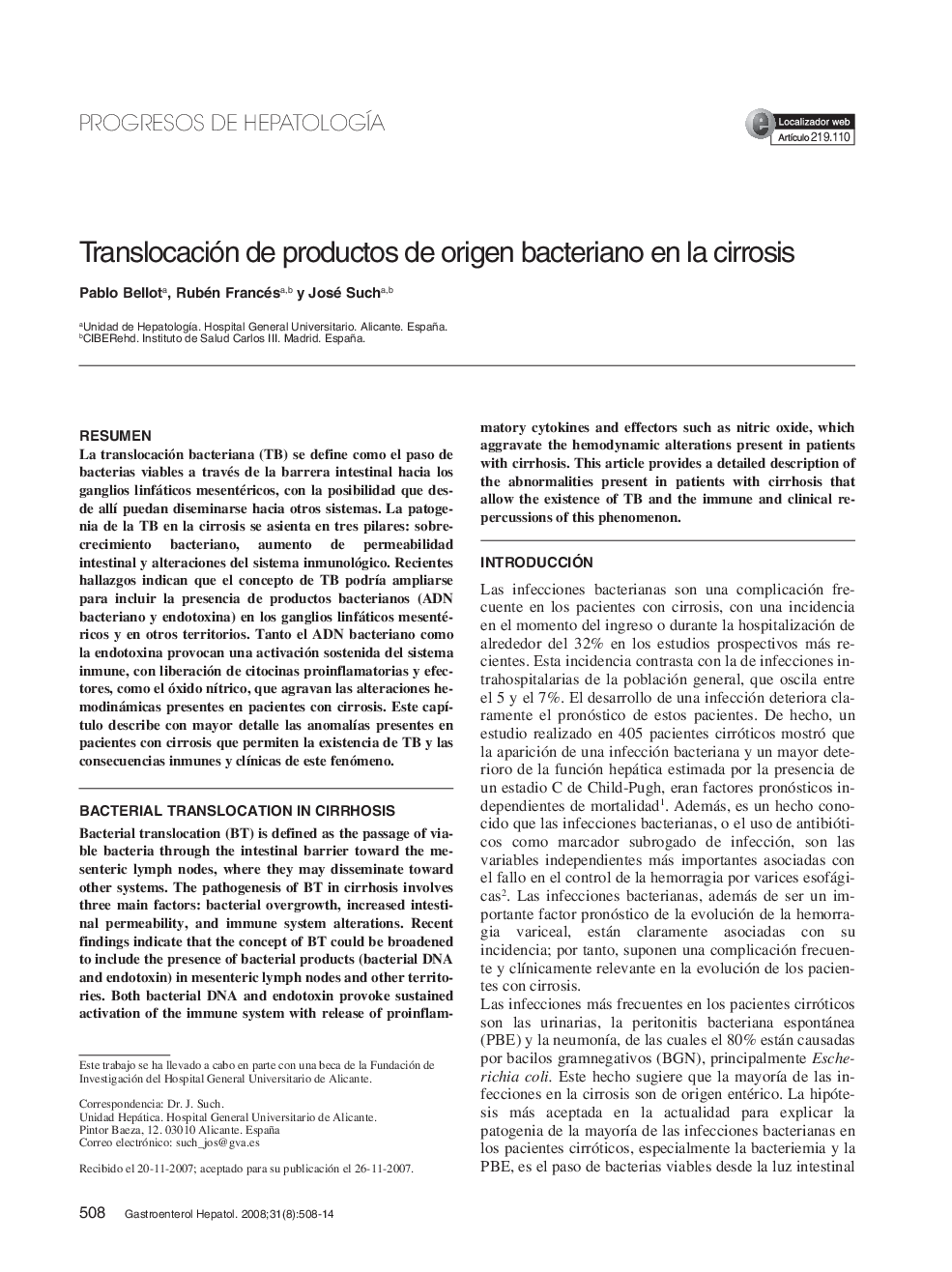| Article ID | Journal | Published Year | Pages | File Type |
|---|---|---|---|---|
| 3288725 | Gastroenterología y Hepatología | 2008 | 7 Pages |
Abstract
Bacterial translocation (BT) is defined as the passage of viable bacteria through the intestinal barrier toward the mesenteric lymph nodes, where they may disseminate toward other systems. The pathogenesis of BT in cirrhosis involves three main factors: bacterial overgrowth, increased intestinal permeability, and immune system alterations. Recent findings indicate that the concept of BT could be broadened to include the presence of bacterial products (bacterial DNA and endotoxin) in mesenteric lymph nodes and other territories. Both bacterial DNA and endotoxin provoke sustained activation of the immune system with release of proinflammatory cytokines and effectors such as nitric oxide, which aggravate the hemodynamic alterations present in patients with cirrhosis. This article provides a detailed description of the abnormalities present in patients with cirrhosis that allow the existence of TB and the immune and clinical repercussions of this phenomenon.
Related Topics
Health Sciences
Medicine and Dentistry
Gastroenterology
Authors
Pablo Bellot, Rubén Francés, José Such,
